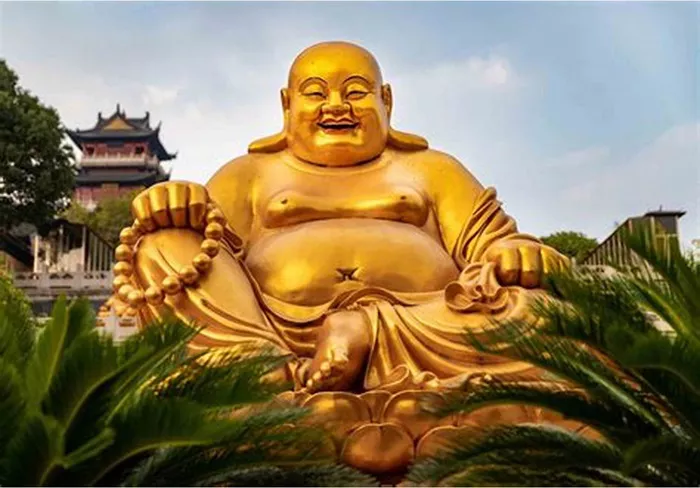Many people wonder why there are buddha statues in a country like Afghanistan. Afghanistan is now known mainly for its deserts, mountains, and history of conflicts. But long ago, it was a very different place. It was once a center of Buddhist culture and art. This article will explain why these statues are there and what they mean.
The History of Buddhism in Afghanistan
Buddhism’s Arrival in Afghanistan
Buddhism came to Afghanistan more than 2,000 years ago. It arrived during the time of Emperor Ashoka, who ruled much of India and wanted to spread Buddhism. Traders and monks traveled along the Silk Road, which passed through Afghanistan. This route connected the East and West, allowing ideas and religions to spread.
Gandhara: The Heart of Buddhist Art
One of the most important regions in ancient Afghanistan was Gandhara. Gandhara was famous for combining Greek, Indian, and Persian cultures. This mix created unique Buddhist art. Many types of buddha statues were made here, showing the Buddha in human form, often with Greek artistic style.
Buddhism’s Influence in Afghan Culture
Buddhist monks built monasteries and carved many statues in stone. These statues showed the Buddha in different poses, like teaching, meditating, or protecting. The statues helped people understand Buddha’s teachings and were places for worship and meditation.
Why Buddha Statues Were Built in Afghanistan
Religious Purpose
The main reason for building Buddha statues was to inspire faith and respect for Buddha. The statues helped people focus during prayers and reminded them of Buddha’s qualities like kindness and wisdom.
Art and Culture
These statues also showed the skills of ancient artists. They were important cultural symbols, mixing different styles from many lands. They told stories of Buddha’s life and teachings without words.
Trade and Exchange
Because Afghanistan was on the Silk Road, the statues also show how ideas traveled. They helped spread Buddhism far beyond India, reaching Central Asia, China, and even Europe.
Famous Buddha Statues in Afghanistan
The Buddhas of Bamiyan
The most famous Buddha statues in Afghanistan were the Buddhas of Bamiyan. These two giant statues stood for over 1,500 years in a cliffside valley. One was about 55 meters tall, and the other 38 meters. They were carved directly into the rock in the 6th century.
Symbol of Peace and Culture
The Buddhas of Bamiyan were more than just statues. They were a symbol of peace, tolerance, and cultural richness. They showed that Afghanistan once welcomed many religions and cultures.
The Tragic Destruction
In 2001, these statues were destroyed by the Taliban. This was a great loss to world heritage and Buddhism. Still, many people around the world remember and honor their history.
The Types of Buddha Statues Found in Afghanistan
Standing Buddha
The standing Buddha statues often show Buddha teaching or blessing. They remind people to follow his teachings in daily life.
Seated Buddha
The seated Buddha statues usually represent meditation and calmness. These statues inspire people to practice mindfulness.
Walking Buddha
The walking Buddha is less common but important. It symbolizes Buddha’s active role in helping others and moving through life with compassion.
The Meaning Behind Buddha Statues
Spiritual Symbolism
Buddha statues are not just art. They have deep spiritual meanings. Each pose and gesture (mudra) tells a story or a teaching. For example, the “Dharmachakra Mudra” means turning the wheel of law, or teaching.
Reminders for Practice
These statues remind Buddhists to develop qualities like patience, kindness, and wisdom. They also help in meditation by giving a focus point.
Cultural and Historical Importance
In Afghanistan, these statues tell the story of a peaceful time when many cultures lived together. They are important for both history and religion.
How Buddha Statues Reflect Afghanistan’s Past
A Crossroad of Cultures
The Buddha statues show that Afghanistan was once a crossroads for many cultures. The art combines Greek realism, Indian spirituality, and local traditions.
Legacy of Buddhism
Even though Buddhism is no longer widely practiced in Afghanistan, the statues remain a reminder of its past influence and the spread of Buddhist teachings.
Preserving Buddhist Heritage
Many scholars and organizations now work to protect and study these statues. They help us learn about history and the peaceful teachings of Buddha.
Conclusion
The presence of Buddha statues in Afghanistan shows a rich and peaceful history. These statues are not just relics; they tell a story of faith, art, and culture. Understanding why these statues exist helps us appreciate the long journey of Buddhism and the connections between different civilizations.

